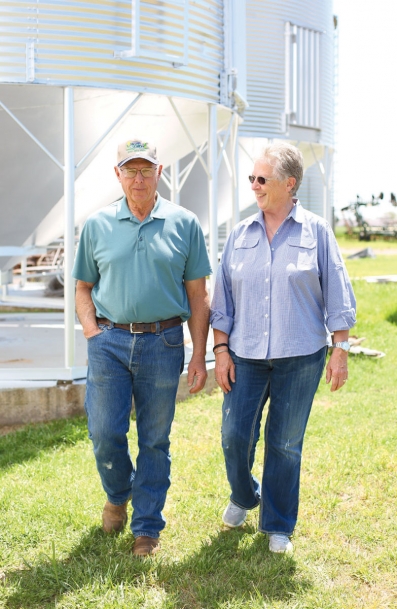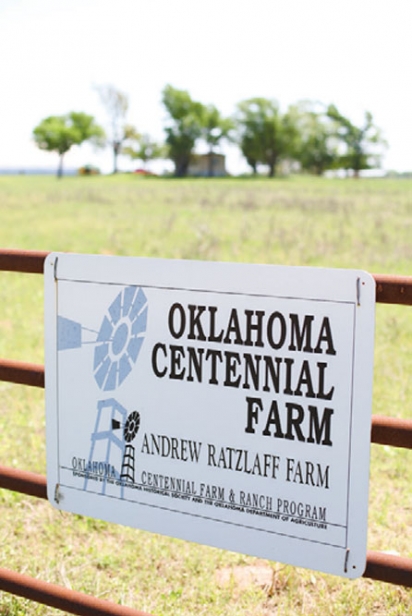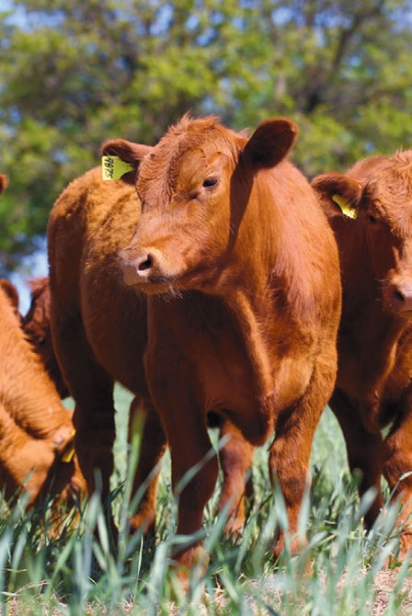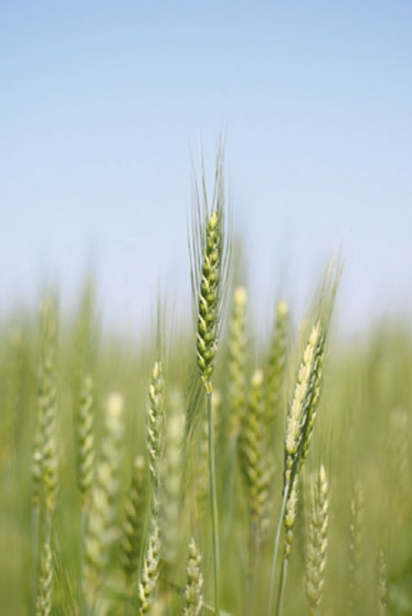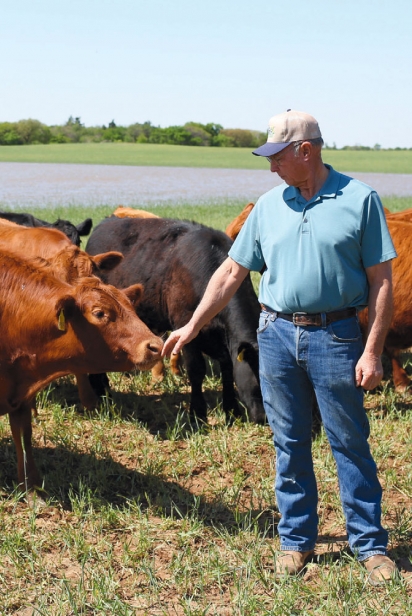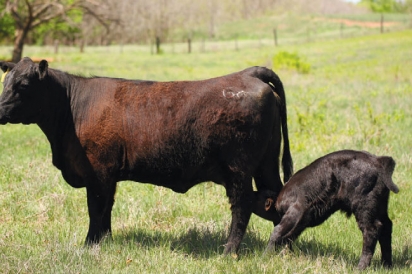John's Farm
The New Standard of Farming
Amidst fields of lush green grasses are some of the prettiest cows you will ever see. Cows are not often considered an attractive animal, but the Red and Black Angus cows on John’s Farm are nothing short of beautiful. You can see how healthy and well-cared for they are by their silky, glossy coats. It only takes a few minutes of talking to Kris and John Gosney, third-generation farmers and owners of John’s Farm, to see how much they love raising cattle and farming organically. John very humbly describes their views on agriculture as “doing it the way the good Lord intended me to farm.”
In 1996 the Gosneys began making drastic changes to their method of farming and they haven’t looked back. The Gosneys were using traditional farming methods on their land in Fairview, Oklahoma when a neighbor asked that they take over some of his land with the stipulation that it be kept organic. Neither John nor Kris knew anything about organic farming at the time, and at first their decision was financially motivated, rather than environmentally motivated. Research showed that an organic method would actually be more profitable than conventional farming. The challenge of learning a whole new system appealed to John so they decided to give it a shot.
First they had to learn what organic even meant. According to the USDA website, organic agriculture means using methods that preserve the environment and avoid synthetic materials like pesticides and antibiotics. With something positive to focus on, the Gosneys began transitioning all of their crops to organic. Within three years they had completely eliminated commercial fertilizers, chemicals, and pesticides. With a renewed passion for agriculture they began the ten-year process of swapping their existing mixed-breed stocker steers to Red and Black Angus cattle to produce their own beef.
There are currently anywhere from 300-350 cows at John’s Farm. Most conventionally raised cattle are only raised about 24 months before being sent for processing, but the Gosneys keep their cattle for two and a half to three years. Keeping the cows longer allows them to fully develop their structure, which allows for development of the ever-coveted marbling of their meat, without the help of added hormones.
Their cattle-raising methods clearly work. Marketed under the label Cattle Tracks, the beef consistently tests incredibly high on the beef quality tests. Robert M. Kerr Food & Agricultural Products Center at OSU has tested the beef and awarded it the highest score on record for CLA (conjugated linoleic acid), a fatty acid believed to help prevent cancer. The Omega 6 to Omega 3 ratio for Cattle Tracks is also impressive. According to the American Heart Association any score under four is considered to be healthy, but the Gosneys’ beef scores 1.8. Any ratio under 4 is believed to help prevent cancer and cardiovascular disease among other positive health benefits. Health rewards notwithstanding, Cattle Tracks beef is simply delicious.
Not only did John’s Farm meet the USDA Organic standards, they also qualified for Non-GMO Project and Animal Welfare Approved status. The Non-GMO Project seal indicates that all components of a product were grown or processed without the use of genetically modified organisms, meaning nothing was made in a lab, or required an engineering degree to create.
The Animal Welfare Approved label is probably the lesser well-known certification because it is only awarded to small, family-run farms, like the Gosneys’. This certification ensures that livestock are treated humanely. The cattle are given constant access to pasture, and animal health is promoted over treated of disease. Once sent to processors, the cattle are slaughtered as humanely and painlessly as possible for the animal.
The certifications Kris and John have been able to obtain for their cattle and their farm is nothing short of extraordinary; according to them, John’s Farm was the first small farm in the country to receive all three of these seals.
Despite all the labels John’s Farm beef has acquired, there is one they have missed—but not because their practices are lacking. Cattle Tracks beef falls just short of The American Grassfed standards because they utilize barley and it does not allow beef to be fed any type of grain. The cows at John’s Farm are allowed to eat as they please in large open fields of native Oklahoma grasses. When the weather won’t cooperate enough to provide the cows with adequate food, John gives them a little extra nourishment in the form of organic barley grown specifically for the cows. While scientifically classified as a grass, barley is widely considered to be and used as a grain in things like cereal. John estimates that conventionally raised cattle receive fifty or more pounds of corn a day, but his cows are only given one or two pounds of barley as needed. Barley is nourishing for cows without the negative impact to the beef’s nutrients (like corn).
In addition to Cattle Tracks beef and Fairview’s Best products, John’s Farm also sells Gloss Mountain Beef Jerky, named after the Gloss Mountains which can be seen from the farm. Gloss Mountain Beef Jerky is free of nitrates, nitrites, preservatives, dairy, corn syrup, gluten, and MSG. The jerky is spiced and dried perfectly with just the right amount of heat and crunch. You can purchase Cattle Tracks beef from Native Roots in OKC, the Oklahoma Food Coop, or by contacting the farm (JohnsFarm.com). You can also purchase products, as well as visit with Kris and John, by stopping by the OSU/OKC Farmer’s Market the first Saturday of every month. Under the brand Fairview’s Best, John’s Farm also produces spice blends, flour, field peas, pancake mix, and dog treats, which can be purchased from their website fairviewsbest.com. If you’re looking for a healthy brand of beef, Cattle Tracks is definitely worth tracking down.


